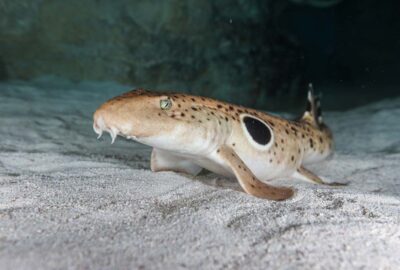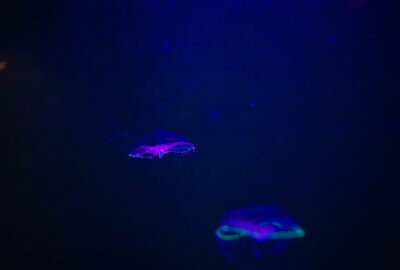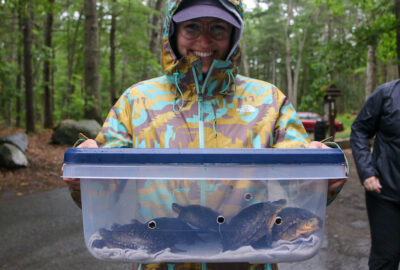Everybody brings something different, great, and complimentary to the table.
Meet the Aquarium’s Veterinary Team
By New England Aquarium on Tuesday, March 01, 2022

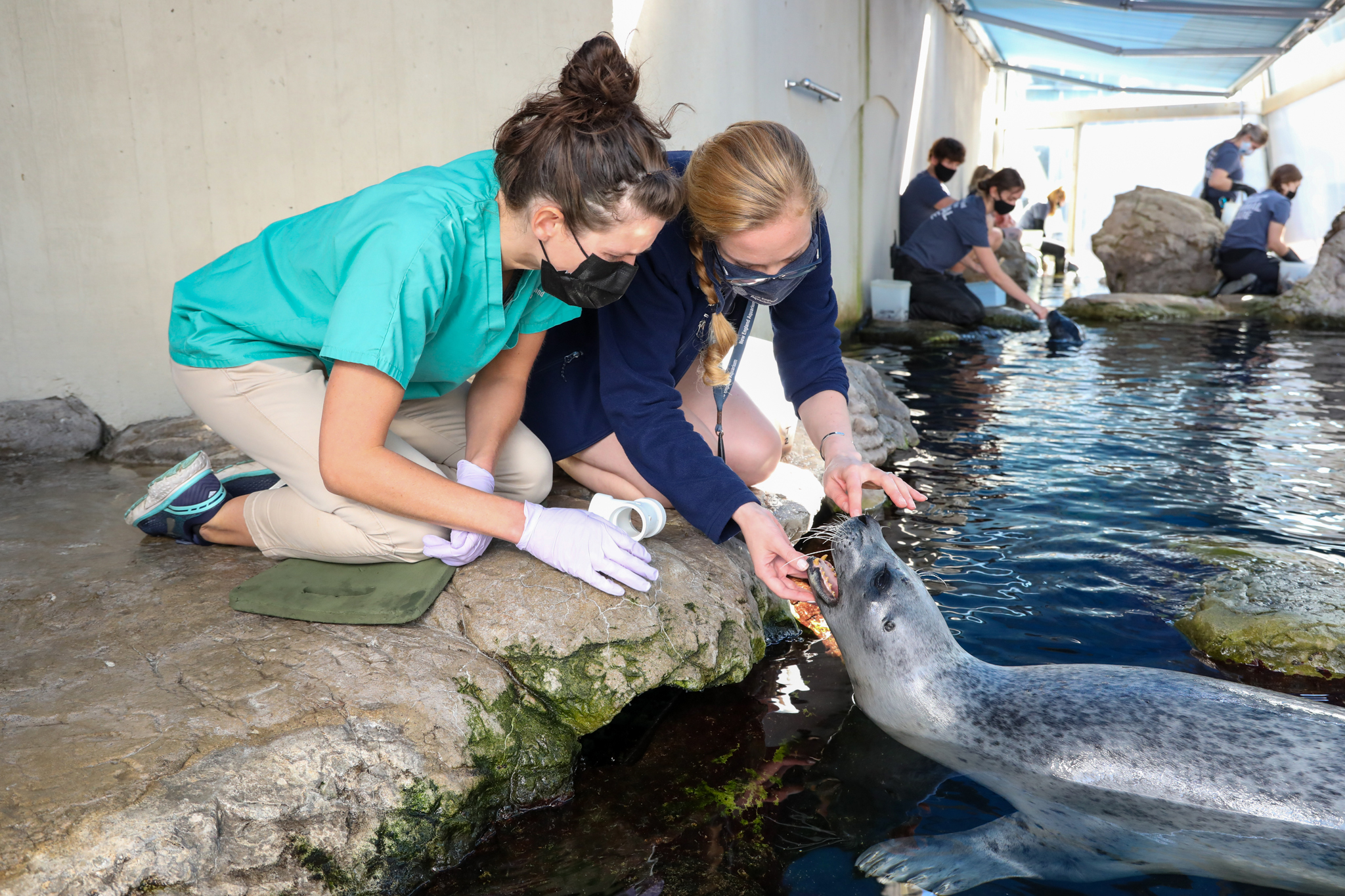
When you ask Dr. Charles Innis, director of Animal Health, what it’s like to work as a veterinarian at the Aquarium, he’ll tell you to picture a town of more than 10,000 inhabitants—animal inhabitants that is—and imagine you are the vet for each of them.
On any given day in this small town, somebody’s going to have some sort of problem that we need to respond to.
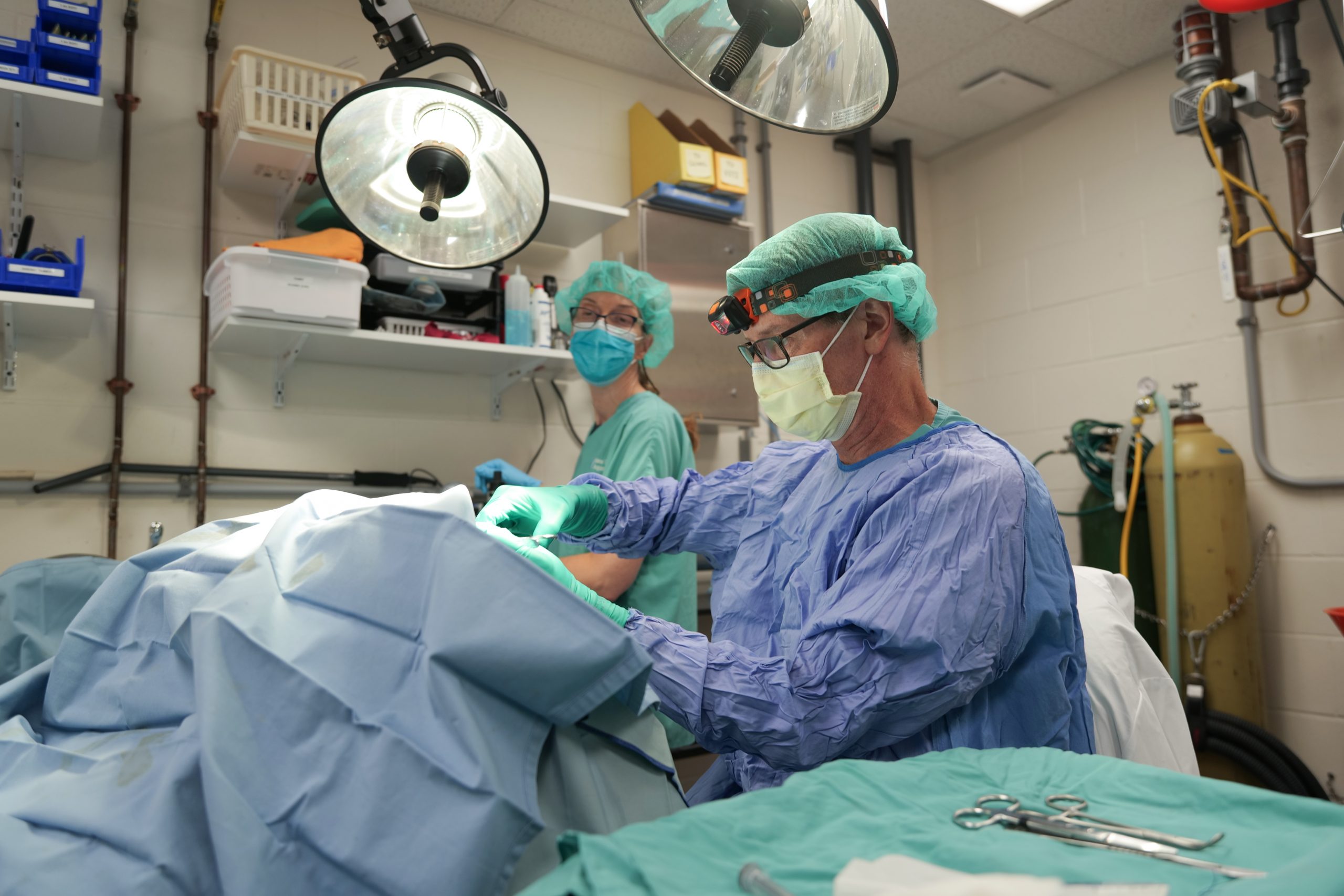
Providing preventative health checks, performing ultrasounds and radiographs, administering antibiotics, drawing blood, ordering dental and vision exams, these are but a few of the many tasks undertaken daily by our Animal Health team. In addition to Innis, who has been at the Aquarium since 2005, the team includes Senior Veterinarian Dr. Kathryn Tuxbury and Associate Veterinarian Dr. Melissa Joblon, and three biologists, Deana Edmunds, Christine Sinnigen, and Mary Beth Tims.
For Tuxbury, who has been at the Aquarium for 10 years and grew up in Florida, aquatic ecosystems have always been influential in her life. “I was around nature and wildlife all the time growing up,” she says. Joblon, a native of Long Island, New York, was also inspired by growing up near the ocean and by a visit to Florida’s Sea World as a child. “It prompted me to want to learn everything there is to know about aquatic wildlife,” she says. All three share an affinity for conservation and a desire to work with non-domesticated animals.
Diversity factors largely in all aspects of their work. “What I like best about my job is the diversity of the collection, the diversity of my job responsibilities, the diversity of backgrounds of my co-workers and colleagues,” says Tuxbury.
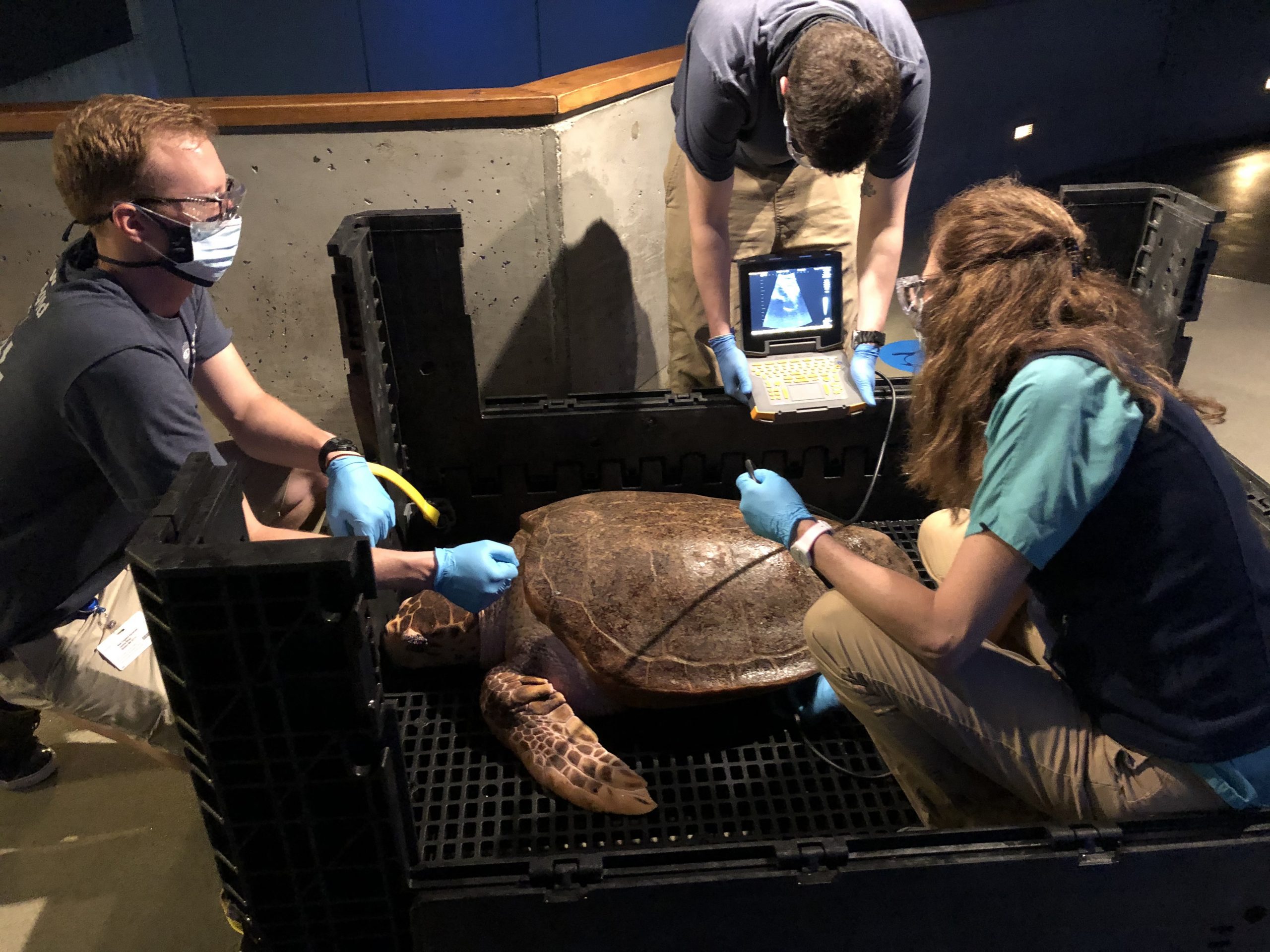
Innis especially enjoys the diversity of species they get to work with on a daily basis, it might be a starfish, a penguin, a turtle, or a seal. “There’s almost always something new, something we’ve never seen before. A new problem we need to think about,” he says. Their work demands knowledge across a vast range of species and the ability to pinpoint and resolve all associated medical and behavioral problems. To this end, they frequently utilize an informal listserv of other vets from across the globe to seek and exchange information. “A lot of times we can get information from colleagues that may have already encountered that situation,” says Innis.
“I honestly really love learning from challenging medical cases,” says Joblon, who’s been at the Aquarium just over three years. “It’s not like dog or cat medicine,” she says, “We still don’t know a ton about a lot of these animals.” Joblon describes a recent challenge involving a stingray who began showing signs of ill health. After several tests to substantiate the suspected diagnosis, including endoscopy, ultrasound, and blood work, “it was determined the female stingray had reproductive tract disease so we ended up removing her ovaries,” says Joblon. The stingray, she reports “was back to normal and doing well within a week after surgery.”
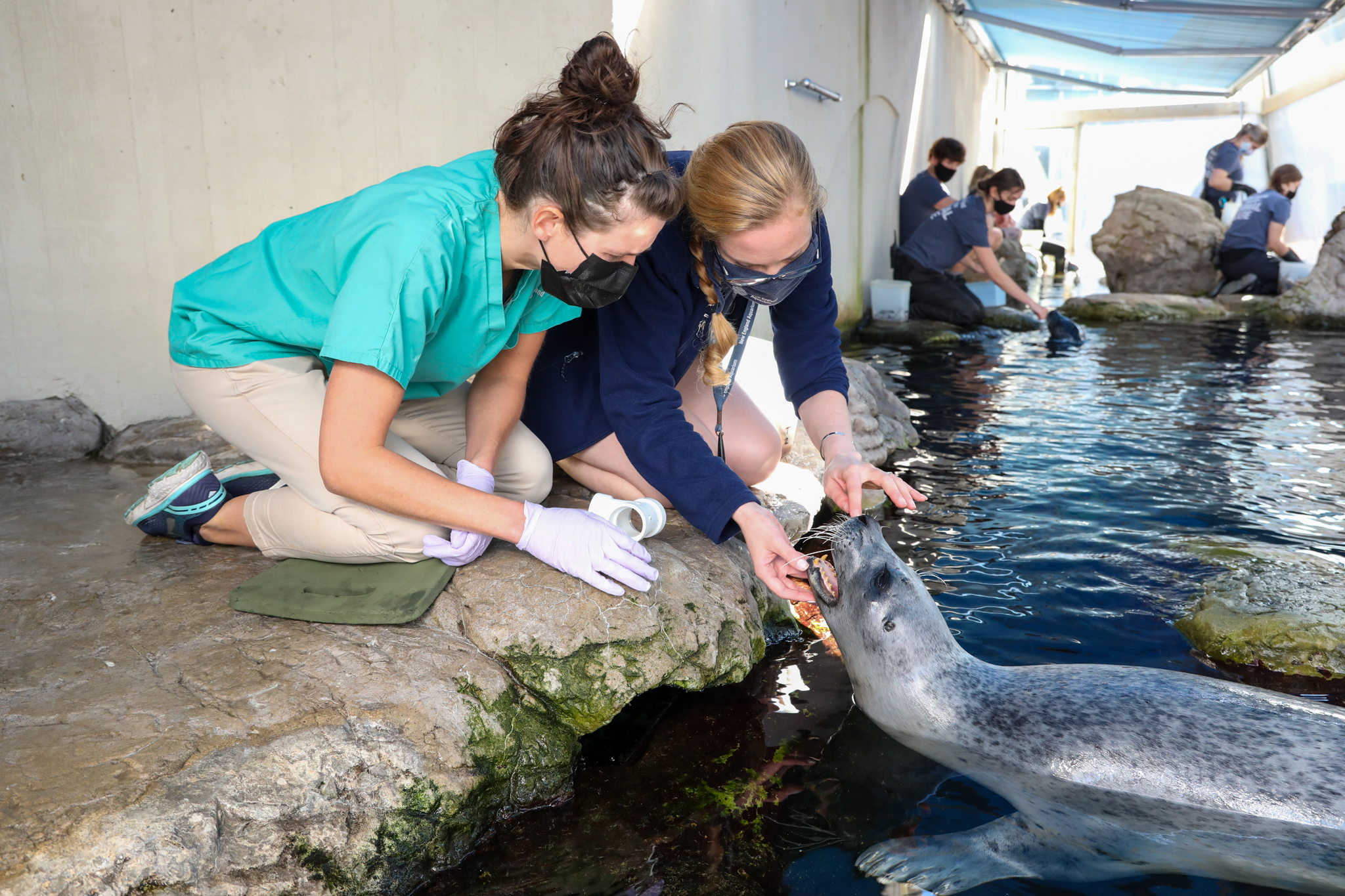
Preventative care also factors prominently in the veterinary team’s work. As a result, there are times when our animals must leave Central Wharf for a medical exams or procedures. This was the case for Atlantic harbor seal Reggae last fall, when he took a trip to Acton, Massachusetts, for some dentistry. As you might imagine, it’s no easy feat to collect, transport, treat, and safely return a 200 lb. marine mammal. The veterinary team coordinates all in- and out-of-house specialist visits for Aquarium animals.
“We’ve got veterinary dentists, veterinary cardiologists, veterinary radiologists, dermatologists, surgeons, and ophthalmologists that are willing to help us,” Innis says. Partnering with others is a constant for the Animal Health team, whether it’s an offsite veterinary specialist or the aquarists and trainers who provide daily care and training across all of our exhibits and fish systems.
It’s really nice because we act as one giant team.
While there is often no road map when diagnosing and treating various aquatic animal medical problems, the team enjoys the challenges of working through each and every case. “It creates an ongoing learning environment and allows our knowledge to continue to grow over time,” says Innis.
“I like the surprises,” Tuxbury says, reflecting on her role at the Aquarium. “I guess I really do have a cool job!”
—Maria Palomino
This story originally appeared in the Fall 2021 issue of blue member magazine.

